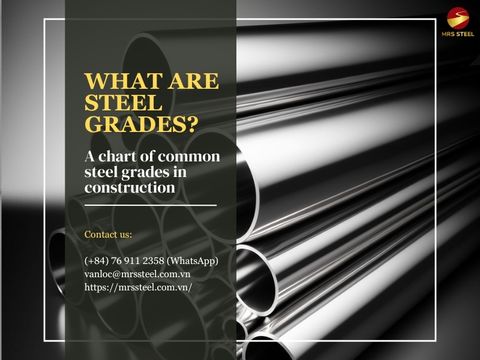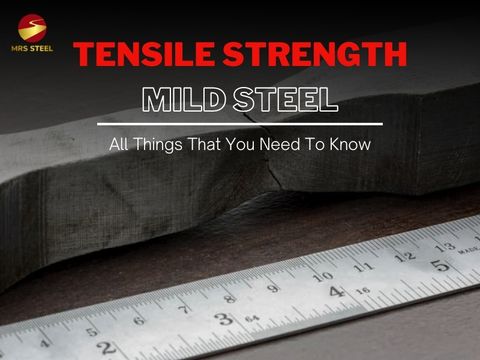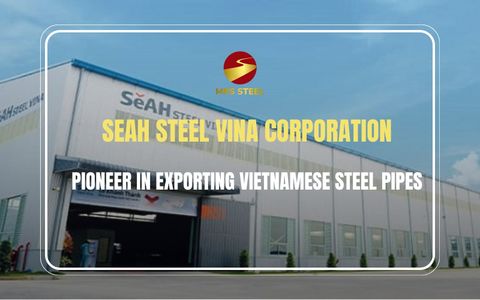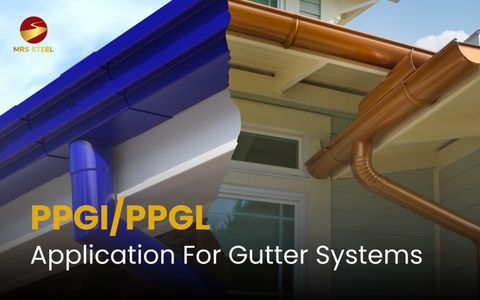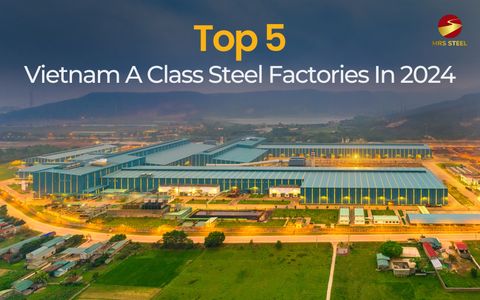Galvanized and painted steel: Which is the best coating steel?

BlogDate: 21-06-2024 by: Ngan Le
Galvanized and painted steel are two types of steel commonly preferred in construction and manufacturing applications due to their superior corrosion resistance and long-term durability. But beneath their tough exteriors lie distinct advantages, making them perfect for specific applications. Let's delve deeper and discover which steel reigns supreme in each domain.
To provide readers with a more comprehensive understanding of these steel, let's delve deeper into their production processes, thickness of coatings, scratch resistance, durability, and cost factors with MRS Steel.

Galvanized and painted steel have significant difference in coating properties
What is galvanized and painted steel?
Galvanized steel is a type of steel coated with a layer of zinc on the surface to protect it from corrosion. The main components of this type of steel are a steel core layer and the zinc coating layer. The steel core is typically made of carbon steel or alloy steel manufactured into various forms such as sheets, coils, or pipes. The zinc layer is applied to the surface of the steel core to protect it from corrosion through reacting with elements in the environment to form a layer of zinc oxide or zinc hydroxide.
The painted steel, on the other hand, is essentially formed from a carbon steel or alloy steel sheet, but then the manufacturer will apply a layer of colored paint to the surface to enhance corrosion resistance and improve aesthetics.

The galvanized and painted steel have the same base steel but they differ in coating layer
How many methods to coat galvanized and painted steel?
The main difference in composition between galvanized and painted steel lies in their coatings, as the steel core of both is essentially the same. To produce galvanized steel, manufacturers employ methods such as hot-dip galvanizing or electrogalvanization. Meanwhile, the color-plating process typically involves various coating methods such as epoxy powder coating or thermal coating.
In the hot-dip method (galvanized steel), steel is immersed in a bath of molten zinc at high temperatures (usually around 450°C) to facilitate the adherence of the zinc layer to the steel surface. Conversely, in the electroplating method, the steel acts as the negative electrode submerged in a solution containing positively charged zinc ions. At this point, the zinc ions migrate and begin to deposit on the steel surface due to the electrostatic attraction between the positive and negative electrodes, forming a tightly bound coating.

Hot-dipped galvanizing is the most popular method of this zinc-coating steel
In the powder coating method of the color-coating process, epoxy paint is melted and fed into an electrostatic spray gun, with the powder paint carrying a positive charge while the steel surface carries a negative charge, creating an attraction between opposite charges. Besides, thermal coating involves using high temperatures to apply a layer of paint onto the steel surface through methods such as spray guns, hot-dipping, or rolling.

People often use spray gun to coat epoxy paint on surface of steel
Comparing galvanized and painted steel features
Although both types of steel share the same steel core, reflecting similar strength in terms of load-bearing capacity, yield strength, and tensile strength, they differ in coating specifications. This has led to comparisons in coating thickness, scratch resistance, durability of the coating over time, and cost.
Coating thickness
Currently, most steel products in factories are typically galvanized with thicknesses ranging from 0.3 to 2.5 mm. This ideal thickness provides excellent corrosion resistance while meeting various technical requirements. Additionally, this is a thickness level that factories can accommodate because thinner requirements would compromise the coating quality and diminish the factory's credibility.
For painted steel, the paint system has been developed over many years with a three-layer paint formula for steel structure, and the thickness of each layer has significantly increased, including the primer, undercoat, and finish coat. The primer layer’s functions to wet the surface and provide good adhesion for subsequent paint layers, the undercoat is applied to enhance protection for the coating system, and the finish coat is responsible for the product's appearance.
Comparing the complexity of the coating systems between galvanized and painted steel, finishing a painted steel product is considered more complex due to the need for compatibility among the layers, including ensuring there is no chemical resistance between these layers. Meanwhile, for galvanized steel, the manufacturer only needs to ensure that the zinc coating is not too thin to maintain the product's corrosion and scratch resistance.

There are 3 color layers for steel structure including primer, undercoat and finish coat
Durability and scratch resistance
The zinc elements in the galvanized steel play a significant role in protecting material from corrosion. When zinc comes into contact with moisture in a humid environment or with oxidizing substances, it forms a layer of zinc oxide that prevents rust. In painted steel products, the color coatings applied to the steel surface are multifunctional specialty paints, specifically designed to resist scratches, UV rays, and fire, such as epoxy, PU, and PVDF paints.
Overall, when comparing durability and scratch resistance of galvanized versus painted steel, galvanized steel is appreciated because zinc is an extremely effective antioxidant. Particularly in coastal environments or harsh weather conditions, galvanized steel is always the optimal choice for construction. Although the coatings on painted steel have many functions, they cannot withstand the strong corrosive effects of salt ions from seawater.

Galvanized steel has stronger scratch resistance compared to painted steel
In the case of scratching, the durability of galvanized steel remains longer-lasting compared to painted steel. When the color coating is scratched, oxidizing agents will immediately affect the steel core and cause corrosion. However, if users promptly detect a scratch on painted steel, they can quickly address it by applying a similar color coating. On the other hand, if the scratch occurs on galvanized steel, a temporary fix becomes difficult as the galvanizing process typically takes place at the factory.

The user can fix the scratch on painted steel by applying a new color layer on surface
The cost of galvanized and painted steel
Price is also one of the differences between galvanized steel and painted steel. With some additional layers of paint on the outside, the cost of painted steel will be higher than that of galvanized steel. Therefore, in projects that need to optimize costs, galvanized steel should be used instead of painted steel.
In certain specific cases, the annual maintenance costs and repair rates for projects using this galvanized steel will be significantly reduced. The coating of painted steel is easily corroded and peeled off due to weather conditions, so users need to continuously inspect and maintain them to avoid aesthetic issues and to ensure the quality of the construction.
Regarding the lifespan of galvanized steel versus painted steel, the zinc coating is proven to perform well for about 50 years, whereas the coating of painted steel will begin to wear off after about 3 years, requiring repainting every 5 to 7 years. This frequent repainting can be a significant cost factor over the lifetime of the structure. Therefore, while painted steel may offer a wider range of aesthetic options, galvanized steel is often considered a more cost-effective choice for long-term durability.

Painted steel will help contractors optimize their budget for large-scale projects
Custom colors option
One of the other important factors when comparing the characteristics of galvanized and painted steel is aesthetics. Painted steel products often offer a variety of color options to meet the needs and preferences of buyers, whereas the tone of galvanized steel tends to be characterized by a bright gray hue.

Color option is various for customer if they choose painted steel for their project
Partnering with MRS Steel to gain quality pre-painted galvanized and galvanized steel for project
In conclusion, if budget is one of the most important factors in your project, then painted steel is a reasonable choice because it not only helps optimize costs but also ensures good scratch and corrosion resistance as long as the environmental conditions are not too harsh. On the other hand, if you need a product with excellent rust resistance and long-term durability for your project, using galvanized steel will help you minimize damage to various components over time.
If you need any advice on the characteristics and technical specifications of galvanized and painted steel, please contact MRS Steel via Email: vanloc@mrssteel.com.vn or Whatsapp: +84 76 911 2358.


















